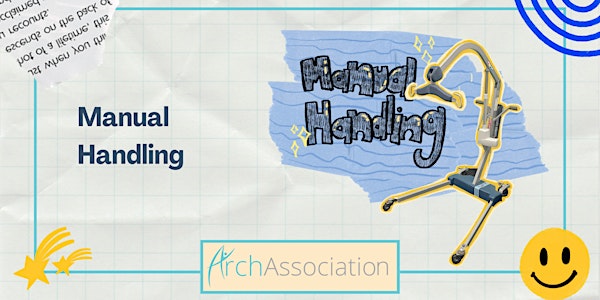
Manual Handling Training with Arch Association
Accessible Manual Handling training for all skill levels.
Location
unit 2/82 Reid Promenade
82 Reid Promenade #unit 2 Joondalup, WA 6027 AustraliaRefund Policy
About this event
Introducing our comprehensive Manual Handling Training for Disability Support Workers!
Designed to empower support staff with essential skills, this course ensures safe and effective assistance for individuals with disabilities. Learn the art of proper lifting, transferring, and positioning, all while safeguarding your well-being and theirs. Our course covers anatomy insights, risk assessment, assistive equipment mastery, and client-centred techniques. With hands-on practice, you'll gain confidence in real-world scenarios, fostering a culture of safety and support. Join us to elevate your skills and make a positive impact on lives.
A manual handling training course for disability support workers aims to provide essential knowledge and skills for safely assisting individuals with disabilities in their day-to-day activities. This training equips support workers with techniques to prevent injuries to both themselves and the individuals they care for during tasks that involve lifting, transferring, and positioning. Here's a general outline of what will be covered:
1. Introduction to Manual Handling:
- Definition of manual handling and its importance in disability support work.
- Explanation of common injuries resulting from improper manual handling.
2. Anatomy and Biomechanics:
- Overview of the musculoskeletal system and its vulnerabilities.
- Understanding how the body moves and the mechanics of lifting and transferring.
3. Risk Assessment:
- Identifying potential risks associated with manual handling tasks.
- Assessing the individual's needs and capabilities.
- Identifying environmental factors that may affect manual handling (e.g., space constraints, equipment availability).
4. Principles of Safe Manual Handling:
- Explanation of the hierarchy of controls (elimination, substitution, engineering controls, administrative controls, personal protective equipment).
- Proper body mechanics and postures to reduce strain and minimise risk.
- Importance of communication and teamwork in manual handling situations.
5. Assistive Equipment:
- Introduction to various types of assistive equipment (e.g., hoists, transfer belts, sliding sheets).
- How to use and maintain assistive equipment correctly.
6. Techniques for Lifting and Transferring:
- Step-by-step instructions on safe lifting, transferring, and positioning techniques.
- Specific techniques for different scenarios (e.g., bed to wheelchair, wheelchair to toilet).
7. Client-Centred Approach:
- Considering the individual's preferences and comfort during manual handling.
- Involving the individual in the decision-making process when planning manual handling tasks.
8. Practical Exercises and Demonstrations:
- Hands-on practice of lifting, transferring, and positioning techniques.
- Role-playing scenarios to simulate real-life situations.
9. Health and Safety Regulations:
- Overview of relevant legislation and regulations related to manual handling in the disability support context.
- Importance of reporting incidents and near-misses.
10. Ergonomics and Self-Care:
- Understanding ergonomic principles in the work environment.
- Techniques for self-care to prevent personal strain and injury.
11. Documentation and Record Keeping:
- Importance of accurate record-keeping related to manual handling tasks.
- Documenting any incidents, risk assessments, and changes in an individual's condition.
12. Continuous Improvement:
- Encouraging ongoing learning and adaptation of techniques.
- Regularly reviewing and updating manual handling procedures.